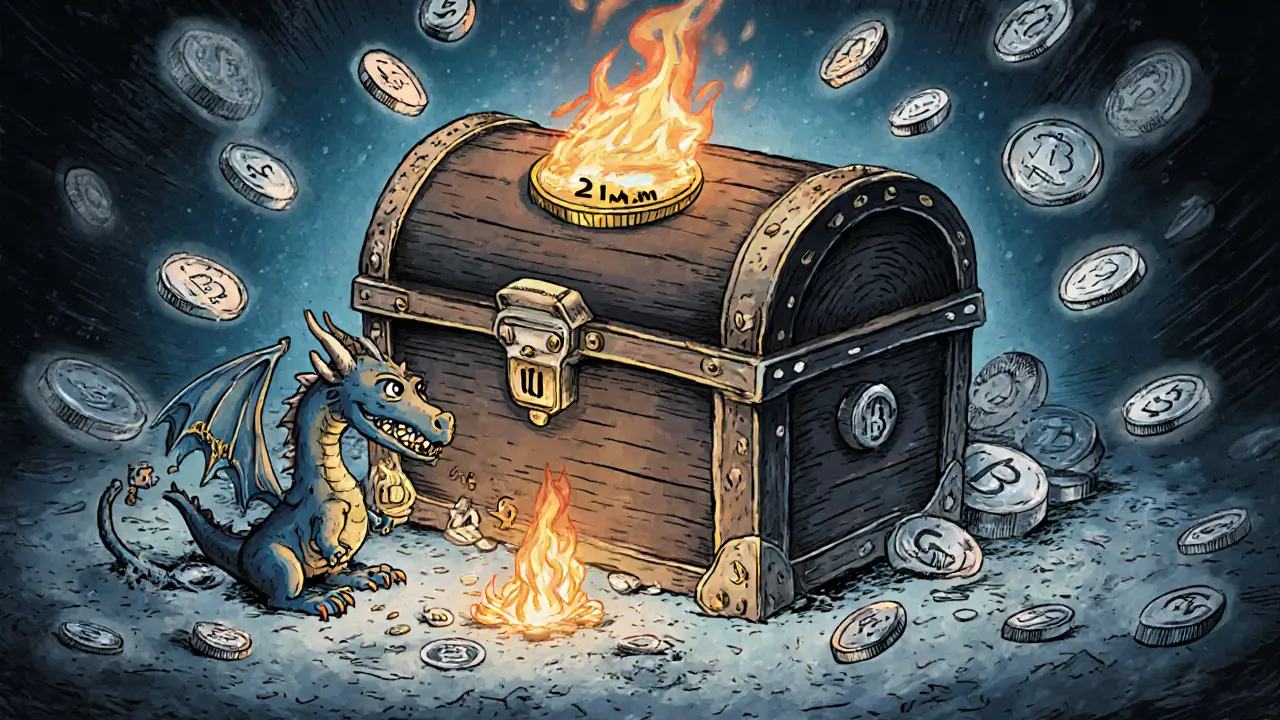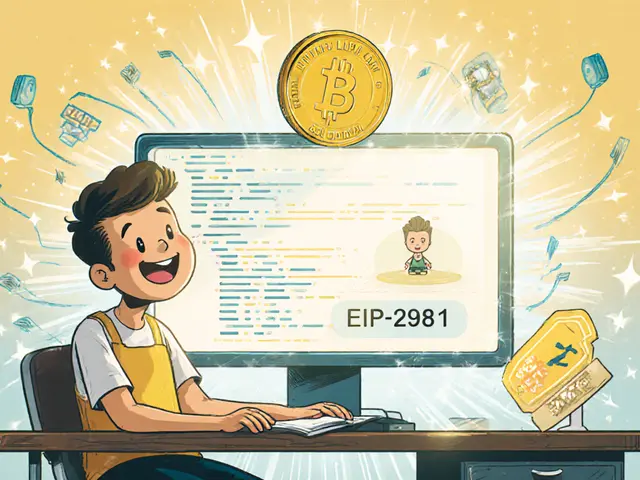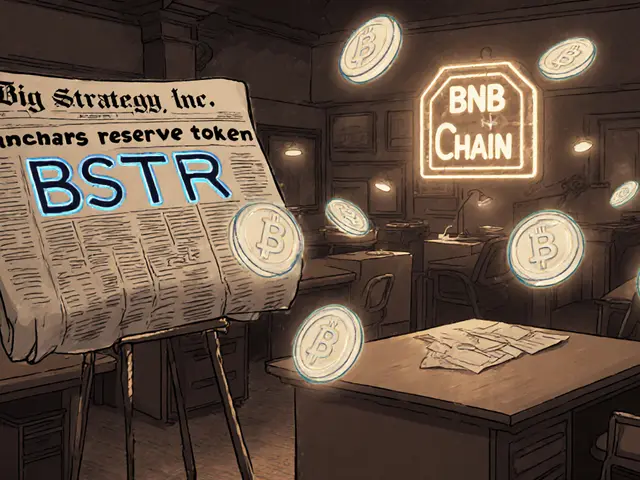
Deflationary vs Inflationary Token Comparison Tool
Inflationary Token
Increases circulating supply over time through mining, staking, or issuance.
- Continuous supply increase
- Encourages spending and liquidity
- Examples: Dogecoin, Ethereum (pre-EIP-1559)
Deflationary Token
Reduces circulating supply through burns or fixed caps.
- Fixed or decreasing supply
- Encourages holding and value accumulation
- Examples: Bitcoin, Ethereum (post-EIP-1559)
| Feature | Inflationary | Deflationary |
|---|---|---|
| Supply Trend | Continuously increases | Fixed or decreasing |
| Primary Incentive | Spend & provide liquidity | Hold for scarcity gains |
| Typical Use Cases | Payments, DeFi rewards | Store-of-value, institutional treasury |
| Volatility Profile | Generally lower, smoother price action | Higher, price driven by supply shocks |
| Liquidity Concerns | Abundant due to ongoing issuance | Can tighten during demand spikes |
Dogecoin
Pure inflationary with uncapped supply.
Low transaction fees, high community engagement.
Bitcoin
Deflationary with fixed 21 million cap.
Strong store-of-value narrative, limited supply.
Ethereum
Hybrid model with staking + fee burning.
Balances network growth and scarcity.
- Inflationary tokens encourage spending and ecosystem growth
- Deflationary tokens promote holding and value accumulation
- Hybrid models offer balance between both approaches
- Understanding tokenomics helps inform investment decisions
When you start looking at crypto projects, the first thing you’ll notice is how they treat supply. Some coins keep adding new units forever, while others shrink the amount that’s actually out there. Understanding whether a token is deflationary token or inflationary can change how you trade, hold, or build a product around it.
What is an Inflationary Token?
Inflationary Token is a digital asset that increases its circulating supply over time, typically through mechanisms like mining rewards, staking incentives, or scheduled token issuance. The idea is simple: as more tokens flow into the market, holders are nudged to spend rather than sit on their balances because each new token dilutes the purchasing power of the ones they already own. Projects that aim for rapid user growth or need a steady funding stream often pick this model. Dogecoin, for example, has no hard cap and releases fresh coins each year, which keeps transaction fees low and community activity high.
What is a Deflationary Token?
Deflationary Token is a digital asset designed to reduce its circulating supply over time, either by setting a fixed maximum number of units or by actively destroying a portion of tokens (often called “burning”). This scarcity creates a built‑in incentive to hold, because each token you own becomes a larger slice of the total pie as the supply shrinks. Bitcoin is the poster child: its 21million‑coin cap and periodic halving events guarantee that fewer new bitcoins enter the market as time goes on, driving a strong store‑of‑value narrative.
How Supply Mechanisms Differ
Inflationary tokens rely on three common supply routes:
- Proof‑of‑Work mining rewards (e.g., Bitcoin’s early years)
- Proof‑of‑Stake staking yields (e.g., Ethereum’s ETH issuance)
- Programmatic issuance for ecosystem funding (e.g., governance token distributions)
Deflationary tokens, on the other hand, use methods such as:
- Fixed caps (Bitcoin’s 21million limit)
- Scheduled token burns, where a percentage of transaction fees is destroyed permanently
- Automated supply‑reduction schedules (e.g., a 2.5% annual burn built into a protocol)
Some projects blend both approaches. Ethereum’s transition to Proof‑of‑Stake kept staking rewards flowing, but the EIP‑1559 upgrade added a fee‑burning component that can make net supply shrink during high‑usage periods.

Economic Philosophy & User Incentives
Inflationary designs assume that a growing supply encourages spending. If you expect your token’s value to stay flat or even dip because more units are being minted, you’re more likely to use it for day‑to‑day purchases, pay fees, or provide liquidity. This creates a virtuous cycle of transaction volume and network effect, which is why many DeFi protocols launch with inflationary reward tokens to bootstrap liquidity.
Deflationary designs flip that script. Scarcity drives a “hold‑for‑value” mindset. As the token pool narrows, each remaining unit commands a larger share of total market capital, which can lead to price appreciation. This makes the token attractive to investors looking for a hedge against fiat inflation, but it can also stifle everyday use because holders may hoard rather than spend.
Market Dynamics & Price Behavior
Because supply directly feeds price formation, the two models show distinct volatility patterns. Inflationary tokens often display smoother price curves: fresh supply can meet rising demand, softening sharp spikes. Deflationary tokens, by contrast, experience tighter supply‑demand balancing, which can cause price swings when demand spikes suddenly-think of Bitcoin’s rally after a major halving.
| Feature | Inflationary Token | Deflationary Token |
|---|---|---|
| Supply Trend | Continuously increases | Fixed or decreasing |
| Primary Incentive | Spend & provide liquidity | Hold for scarcity gains |
| Typical Use Cases | Payments, DeFi rewards, network funding | Store‑of‑value, institutional treasury |
| Volatility Profile | Generally lower, smoother price action | Higher, price driven by supply shocks |
| Liquidity Concerns | Abundant due to ongoing issuance | Can tighten during demand spikes |
When you weigh these traits against your own goals-whether you’re a trader, a developer, or a protocol designer-you’ll see why each model fits a different niche.
Real‑World Examples
Bitcoin is a deflationary cryptocurrency that caps supply at 21million coins and halves block rewards roughly every four years. Its scarcity narrative fuels institutional interest and long‑term holding, but the same scarcity makes it less convenient for micro‑payments.
Ethereum runs a hybrid model: staking rewards inject new ETH (inflationary), while EIP‑1559 burns a portion of transaction fees (deflationary). Net supply can swing either way depending on network activity, giving users a taste of both worlds.
Dogecoin follows a pure inflationary path with an uncapped supply, which keeps transaction costs low and encourages tipping and community‑driven usage. However, the endless minting limits its appeal as a store of value.
Other tokens, like Proof of Work systems, generate new coins through mining, feeding inflation; while Proof of Stake rewards validators with freshly minted tokens, also inflationary. Both mechanisms can be paired with burning functions to introduce deflationary pressure.

Pros & Cons of Each Model
Inflationary Tokens
- Pro: Easy to fund development and ecosystem growth.
- Pro: Lower price volatility supports everyday transactions.
- Con: Continuous dilution can discourage long‑term investors.
- Con: Unlimited supply models risk runaway inflation if demand stalls.
Deflationary Tokens
- Pro: Strong scarcity often translates to price appreciation.
- Pro: Attractive as a hedge against fiat inflation.
- Con: Hoarding can limit liquidity and real‑world use.
- Con: Fixed supply removes flexibility to respond to market shifts.
Hybrid Approaches & Future Outlook
More projects are experimenting with dynamic tokenomics-adjusting inflation rates via governance votes, or triggering burns when certain on‑chain thresholds are met. This middle ground aims to capture the best of both worlds: enough supply to keep the network fluid, plus scarcity mechanisms to reward long‑term holders.
Regulators are also watching supply designs closely. Fixed caps may be seen as more “securities‑like” because they create predictable value, while unlimited issuance can be framed as utility‑focused. As the industry matures, you’ll likely see token designs that adapt to regulatory feedback, market cycles, and community preferences.
Whether you’re deciding where to allocate capital, designing a new blockchain, or simply curious about why some coins feel “cheap” and others feel “precious”, the supply model is the lens you need. Remember: the token’s math tells the story, but the community’s behavior writes the ending.
Frequently Asked Questions
What happens to a token’s price when its supply is fixed?
With a fixed supply, price movements are driven almost entirely by demand. If more users want the token, the limited pool forces the price up, and vice‑versa.
Can an inflationary token become deflationary?
Yes. Ethereum’s EIP‑1559 fee‑burning feature can push net supply negative when network demand spikes, effectively making the token deflationary during those periods.
Why do DeFi projects often issue inflationary reward tokens?
Inflationary rewards attract liquidity providers and validators by offering a steady stream of new tokens, which helps bootstrap the protocol’s security and usability.
Is a deflationary token always a better store of value?
Not necessarily. While scarcity can support price gains, extreme hoarding may reduce liquidity, making it hard to convert the token without slippage. Market perception and adoption also matter.
How do token burns actually work?
A burn sends tokens to an address that no one can control-usually a null address like 0x000…0. Those tokens are forever removed from circulation, shrinking the total supply.





Comments (5)
Norman Woo
so like... what if the whole crypto thing is just a government psyop to get us used to digital money? i mean, deflationary tokens = gold standard 2.0, right? but who controls the burn addresses? lol probably the fed. also dogecoin is definitely a trap. i saw a guy on 4chan say shiba is the real one but then he vanished. 👁️
Serena Dean
Love this breakdown! Really nailed the practical differences between inflationary and deflationary models. Just wanted to add that Ethereum’s hybrid approach is genius-it keeps liquidity flowing while still rewarding long-term holders. The burn mechanism alone has taken over 5 million ETH out of circulation since 2021. That’s not just theory, that’s real scarcity in action. And yes, Dogecoin’s infinite supply is why it’ll never be a store of value-but it’s perfect for tipping your favorite streamer 😊
James Young
You people are missing the point. Bitcoin’s 21 million cap is a joke. The supply isn’t fixed-it’s just delayed. Halvings don’t stop inflation, they just make it predictable. And EIP-1559? That’s just a PR stunt. The real supply control is in the hands of miners and whale wallets. If you think deflationary = safe, you’ve never seen a 90% dump after a liquidity crunch. This isn’t finance, it’s casino math dressed up as economics. Stop drinking the Kool-Aid.
Chloe Jobson
Great context on the supply dynamics. The real insight is how incentive alignment shifts: inflationary = network growth, deflationary = value capture. Ethereum’s burn + staking creates a feedback loop where usage fuels scarcity. That’s the sweet spot. Also-token burns aren’t magic, they’re math. Address: 0x000...000. No private key. Irreversible. Simple. Elegant.
Andrew Morgan
Man I just love how crypto keeps reinventing money like it’s a sci-fi movie and we’re all the protagonists. Inflationary tokens are like pizza-you eat it fast before it goes cold. Deflationary? That’s your grandma’s gold necklace. You don’t wear it, you just stare at it and feel rich. But hey, both work. The community decides what’s valuable. And honestly? I’m just here for the memes and the moon